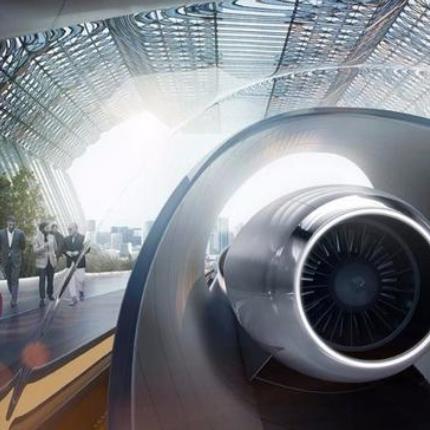 The idea might sound like something out of a sci-fi flick.
The idea might sound like something out of a sci-fi flick.
An electric-powered train encased in a tube first envisioned by Elon Musk is being developed by a company called Hyperloop USA. It could take you to Miami from Orlando in 26 minutes — traveling at more than 750 mph.
But before that happens, some transportation experts have a message: Hit the brakes.
“You can’t just slap some pipes together and assume they will work,” said Marc Thompson, a former engineering professor who in 2013 came on as a consultant for a previous magnetic levitation, or maglev, project in Orlando that was not built. “You wouldn’t say it’s impossible, but there is a long road ahead before we get to it.”
Hyperloop USA hopes to build high-speed rail lines in multiple U.S. and international locations, and earlier this month placed an Orlando-to-Miami route on a short list of potential sites.
The company did not respond to a request for comment.
The company plans to start testing the technology this year but would not be ready for cargo runs until at least 2020 and passenger rides until at least 2021. The idea has been received enthusiastically from some circles, including business owners in Central Florida.
Some welcome a shorter trip because right now they say they spend hours in highway traffic on business trips to Miami. Others say a short trip would open access to potential customers.
Alex Guastella, an entrepreneur whose medical platform Quick’rCare helps doctors schedule patient visits online, frequently makes the trip to Miami to recruit providers. He often drives instead of flying because there is less hassle, he says.
Lower property values in Central Florida also might persuade people to live here and work in Miami, Guastella said.
“The markets are completely different in terms of what Orlando and Miami have to offer,” he said. “You would easily find enough people to take that ride into work if the timing were that short.”
Hyperloop One has faced obstacles in development.
The company’s plans have been scaled back after a test track was too short to achieve speeds they want, The Wall Street Journal reported this month.
And those stumbles come long before the company considers the business obstacles ahead. Not every business in Central and South Florida would make regular use of transportation between the regions, for instance.
“Some people might try it for the fun of it but after that, the novelty wears off,” said Essam Radwan, a professional engineer in Florida who teaches at University of Central Florida.
Radwan likens the technology to the vacuum tubes many banks use to interact with customers at drive-up teller stations.
A flight to Miami from Orlando takes about 65 minutes and costs more than $100. The shortest available trip by train is nearly 6 hours.
Business Insider quoted a Hyperloop official at the South by Southwest conference saying a 36-minute trip from Los Angeles to San Francisco, usually a nearly six-hour drive, could cost as little as $20.
A longtime transportation industry veteran says new ideas are needed.
“It might be a bit of a stretch for some but it deserves a closer look,” said Harry Barley, executive director of MetroPlan Orlando, a transportation consulting group that works in Orange, Osceola and Seminole counties. “There is some credibility [with Elon Musk] here.”
Rail service in Central Florida has seen several changes or proposals already this year.
All Aboard Florida’s Brightline service has touched off a debate in the state Legislature over regulations of passenger rail service in the region.
Brightline plans to establish a line between Miami and Orlando, by way of Florida’s eastern coast. But its timeline continues to fluctuate.
A Hyperloop trail would make that route seem like a marathon trip.
“Many of us were enthused by 3 hours, now bring that down to 30 minutes up the belly of the state,” Barley said. “There is a tremendous potential with linking these two cities.”
Source: Orlando Sentinel

